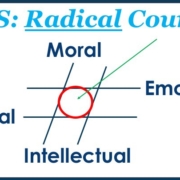Overcoming Fear: Proven Strategies for Managing and Empowering Your Team
Do you have employees and clients that have fears? Fear is a powerful emotional response to danger that can motivate people to lash out, flee from a task, or paralyze their progress.
Helping them will boost their confidence and productivity, strengthen your relationship, and set a solid foundation for growth. The best way to do that is to give them a conscious process for understanding their fear and action steps to move forward.
You don’t want to miss this article if you want to help your employees move forward in the face of their fears.
Fear can be a tape that plays in the back of your mind, activating your amygdala’s fight, freeze, or flight instincts. You feel deep anxiety or trepidation, but you often cannot put your finger on the actual cause. The results can include anger, procrastination, stewing, withdrawing, and other impulses designed to reduce the fear. Such actions can harm your performance and relationships.
As my friend Dr. Mark Goulston (may he rest in peace) counseled and Dr. Susan David discusses in Emotional Agility, the first step is to label the fear. “I am feeling fear, because …” Identifying the emotion and cause lowers the intensity and makes the intangible tangible. Now, you can create some space between the emotion and your response.
F.E.H.R. can help you categorize the source of the fear – what is the danger you perceive? Some fears involve Failures: you try something new that does not work. Others concern Errors; you fear making mistakes. The prospect of Harm or physical danger can arouse fear. Relationships are another source of anxiety; you do not want to let someone down.
Second, you can use this double-axis chart to help you understand why you fear Failure, Error, Harm, or Relationship damage, and, third, develop action steps to manage it.
Fears can result from past experiences or anticipation of future events. You can fear Problems or Success.
In the upper left, you fear an inability to repeat past successes. You turned around a struggling enterprise, ran a successful fundraising campaign, or climbed a difficult mountain peak, for example, and you don’t think you can do it again. The prospect of making mistakes, failing to achieve past results, hurting yourself or others, and/or letting people down causes fear.
To deal with this fear category, you can set a different success benchmark based on the conditions you face today, strengthen your support network, and take steps that reduce the risk of problems.
The lower left deals with the fear of repeating past problems. To address this area, you can identify the causes of those problems and take steps to reduce the probability of recurrence or their seriousness.
You can manage fear of future FEHR problems (lower right) with risk mitigation, insurance, boosting capacity, and pre-mortems that identify hidden challenges.
People can fear their inability to manage future success or harm to relationships that come from it. Strengthening your support system, anticipating future needs to meet success, and reducing the sappers and trappers in your life are some ways to deal with this area.
Giving people the tools to understand and address their fears is one of the best ways to help position your employees for success and roles of greater responsibility.
I’d be delighted to discuss ways to position your employees to soar to new heights and make ever-better contributions. The call is free. There’s no sales or B.S. I’ll give you action steps that get results whether or not we decide to take the next step.










